SINTOMS Ltd. is the only one company in the world that has been professionally producing top quality frets for musical instruments and fretting tools for over 30 years.
Five lines of SINTOMS frets (the Main one, Elite Nickel Silver frets, Zero frets, frets in measured rolls, microtonal frets) include over 500 models of frets made of 10 different materials for a wide variety of instruments.
Frets manufactured by SINTOMS that support, sustain and improve the sound of musical instruments are very popular all over the world and widely used by luthiers, factories and workshops.
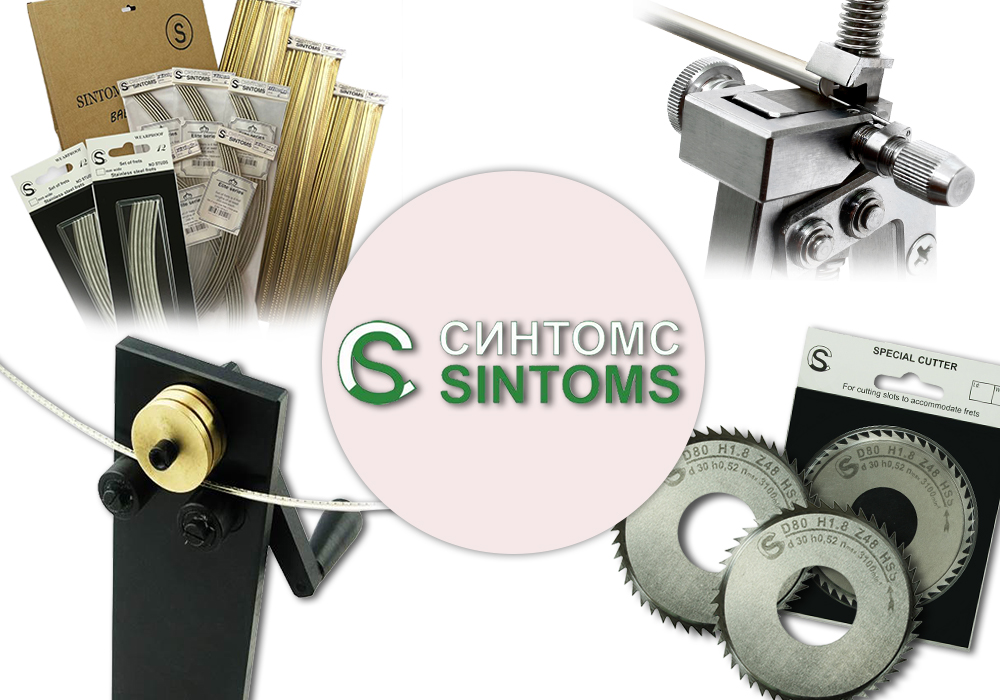
Brief reviews of our products:






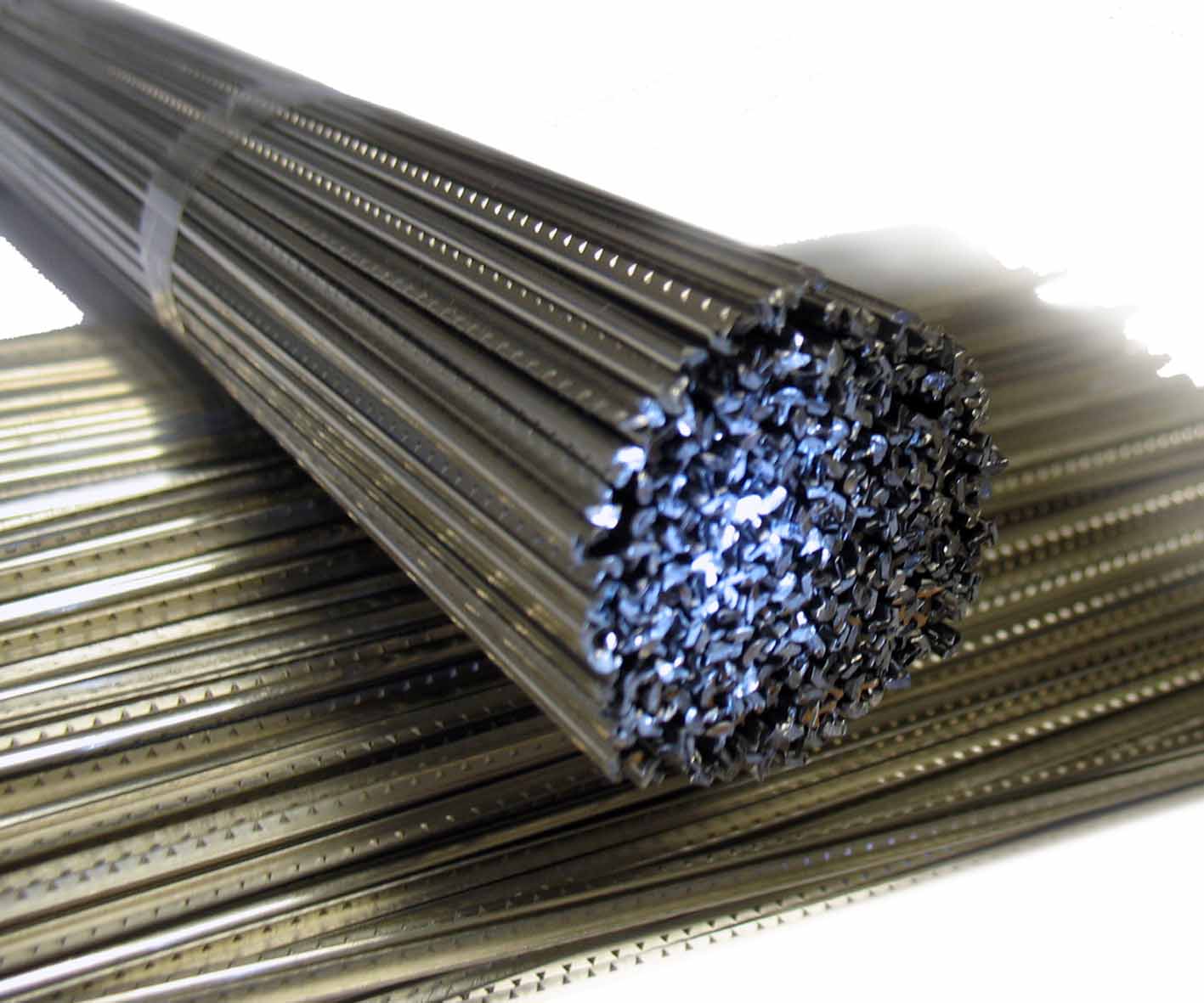
The main series of SINTOMS products includes fretting tools and frets made of the following materials: nickel silver (with 8%, 12%, 18% nickel content), stainless steel, ringing stainless steel, special brass, bell bronze, special titanium, non-allergenic alloy.
Frets from the main series are supplied in sets F (factory delivery, 1 set is 6 straight lengths 260 mm each), S (store delivery, 1 set is 12 pre-bent lengths 130 mm each in a blister package), SE (store delivery, extended set is 18 pre-bent lengths 130 mm each in a blister package), FR (factory delivery in rolls), as well as packs of equal high frets.
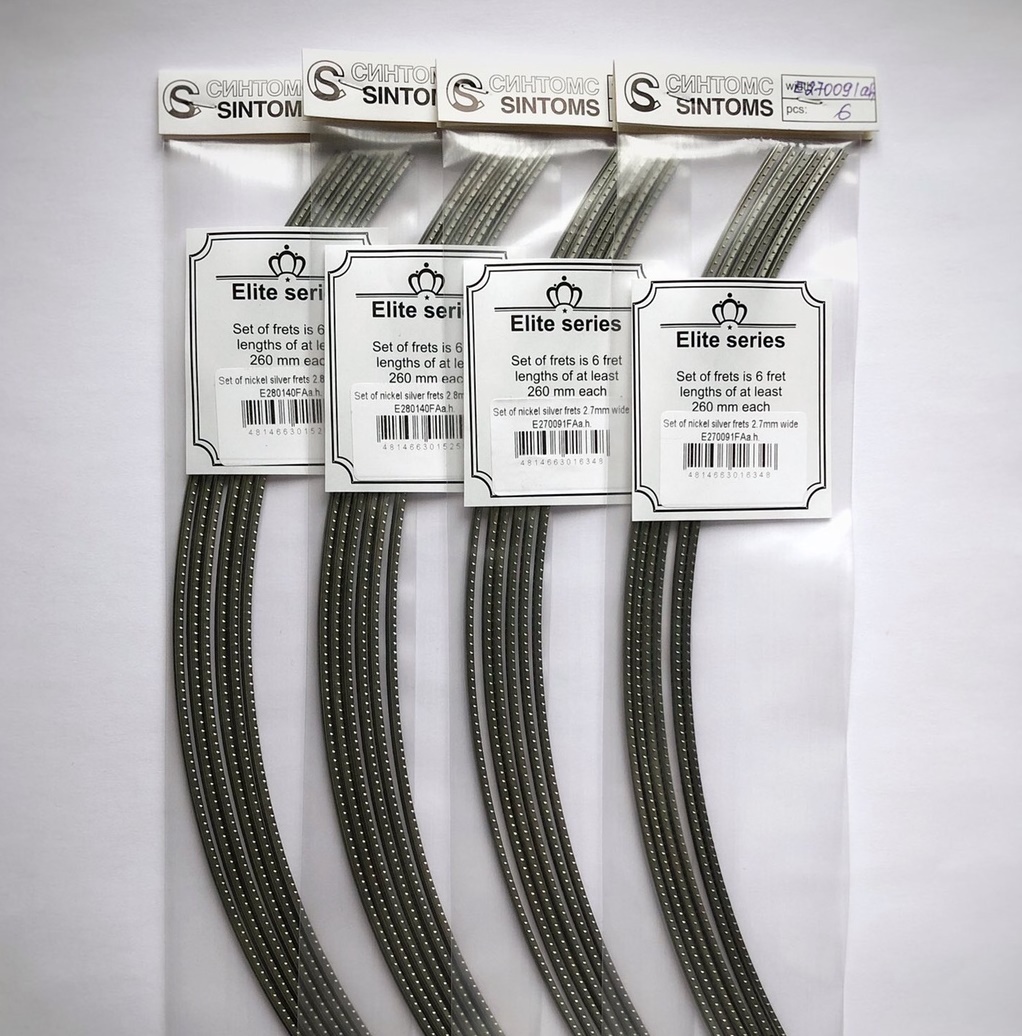
Elite series includes only nickel silver frets. Moreover, only this series includes nickel silver adamant hard (a.h.) frets with 25% nickel content with improved wear resistance.
Frets from the elite series can be delivered in arc-shaped factory delivery fret lenghths (FA) with the same curve radius 7.5-8.5 imches (19.05-21.59 cm) along the entire length.
The frets have well-shaped fret ends.
The package for elite series frets has bar codes and a new design.
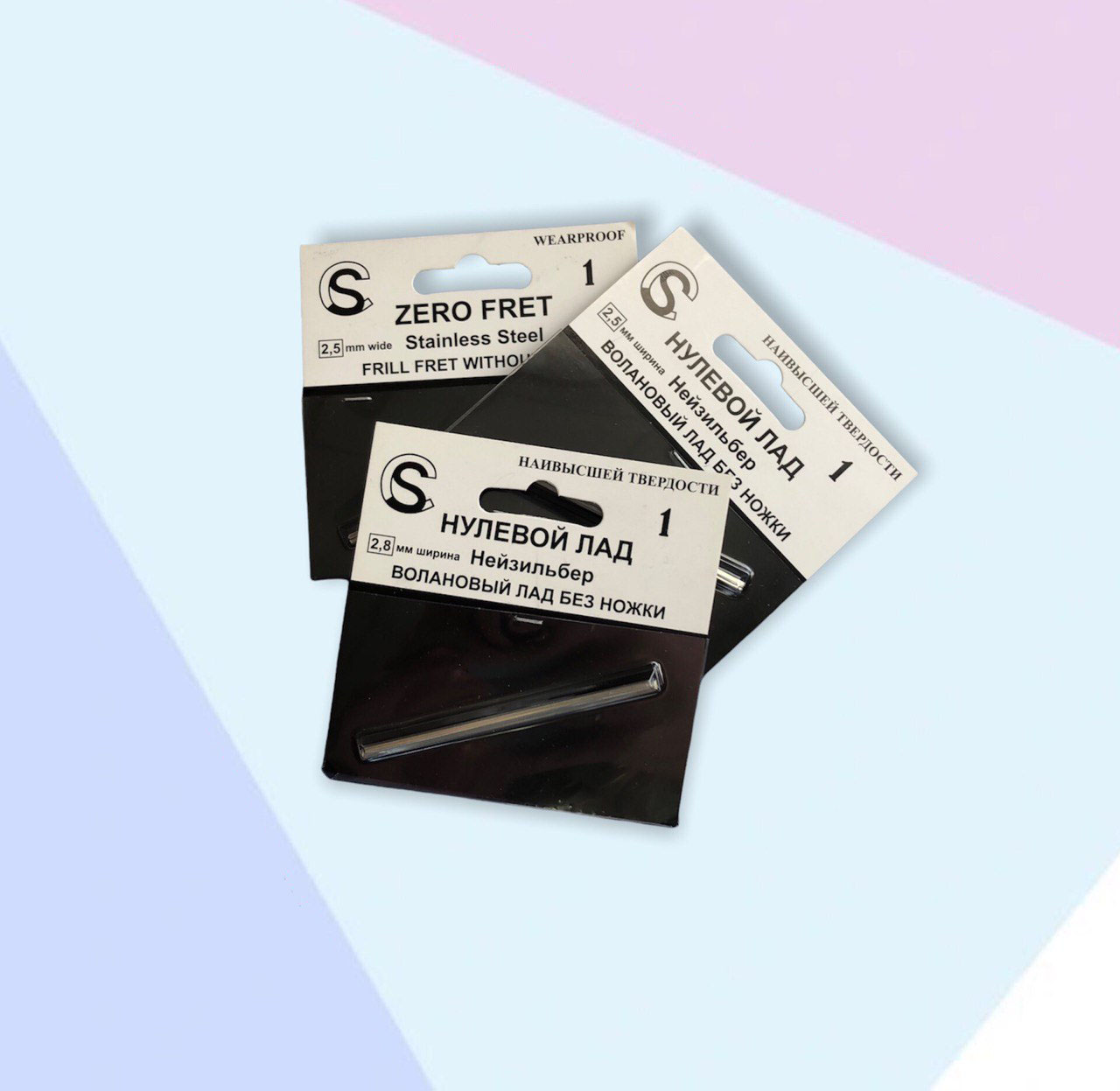
There are 2 SINTOMS zero frets types:
1) Zero frets without a tang have only a frill type. Such a fret is easily mounted on any musical instrument without additional works with a nut and a fingerboard.
2) Zero frets with a tang without studs have 2 types: asymmetrical and frill-asymmetrical profiles. They are mounted in a previously milled nut.
The highest point of the fret crown of each profile has a shift that reduces the musical instrument’s scale by 0.4 mm thus improving its tuning.
SINTOMS zero frets are produced from 3 different materials: nickel silver with 25% nickel content, stainless steel, bell bronze.
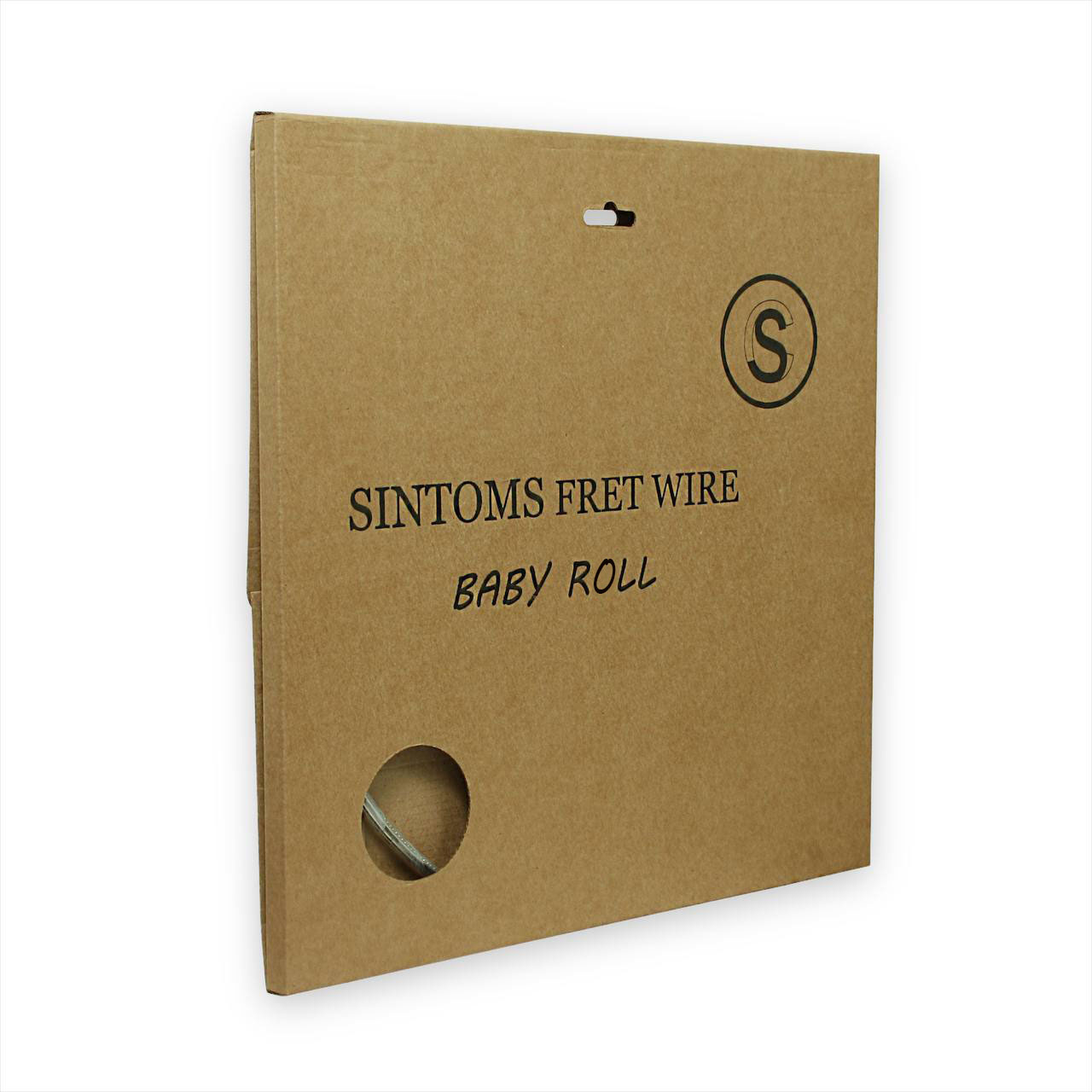
Frets in measured rolls are fret rolls of small diameter (from 360 to 380 mm), the so-called “baby rolls”, of the traditional profile, with a fixed roll length of 6.5 meters (V6,5) and 8 meters (V8).
These rolls are widely used by luthiers and musical instrument repair shops who use fret rolls for small volumes of their work.
Frets from the “baby roll” of the V6.5 variant are more than enough for installation on 4 guitars (24 frets), and of the V8 version – for 5 guitars.
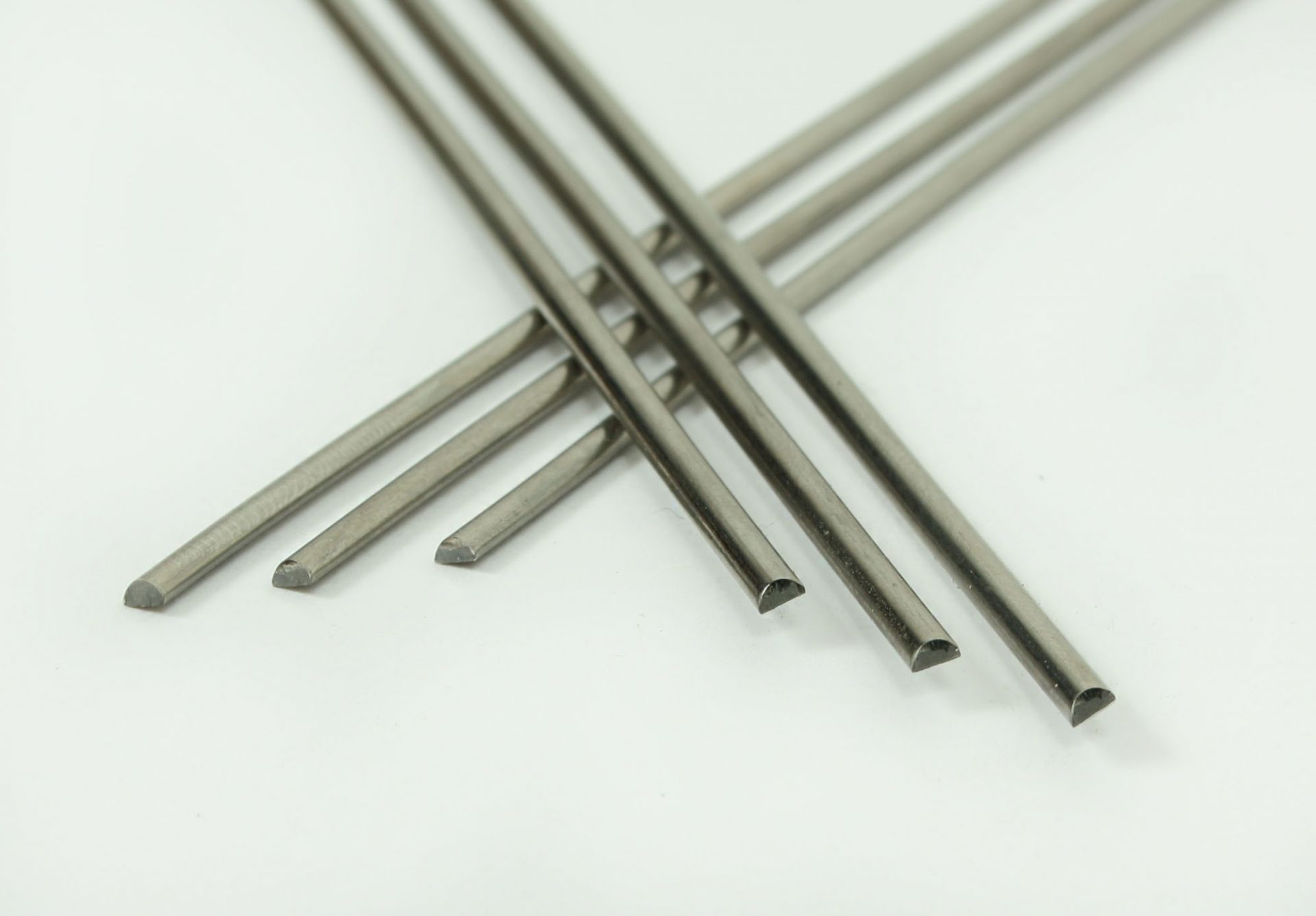
Microtonal frets have been developed for microtonal guitars and are of the traditional form of frets without tang.
Before installing these frets on the guitar neck, the guitar manufacturer must weld a special slider tang to the underside of the fret head.
A microtonal guitar has vertical slots (channels) in the fretboard under the strings.
Microtonal frets are inserted into the slots with a welded tang and move up and down the channel under the strings to a position chosen by the musician.
SINTOMS microtonal frets are made of nickel silver with 18%, nickel content, of stainless steel, and ringing stainless steel.
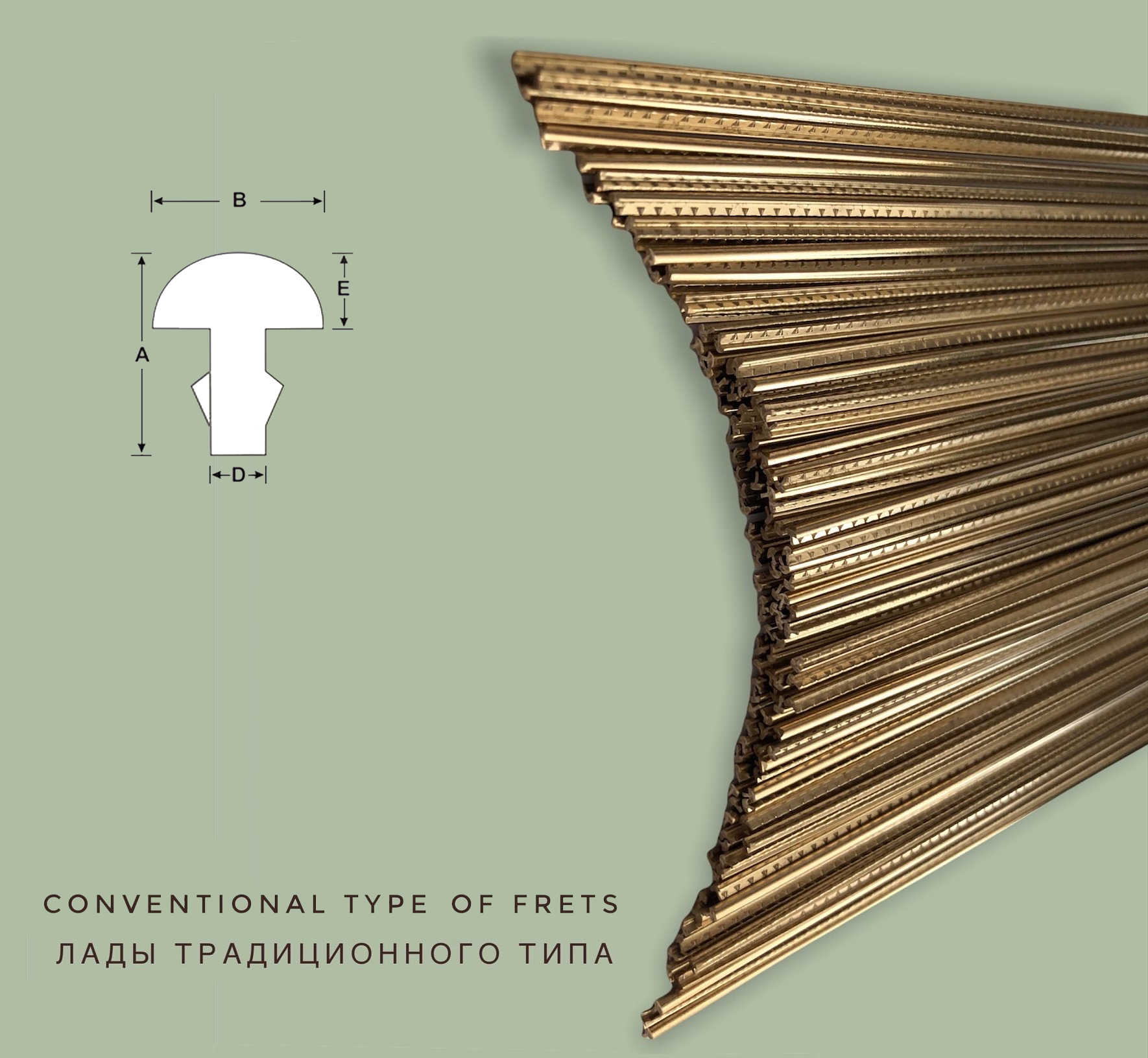
Traditional frets are in highest demand.
They have the fret crown width from 1.2 up to 4.3 mm (0.047−0.169”).
They are produced from the following materials:
1. Nickel silver (4 types);
2. Stainless steel (2 types);
3. Brass;
4. Bell Bronze;
5. Titanium;
6. Non allergenic alloy.
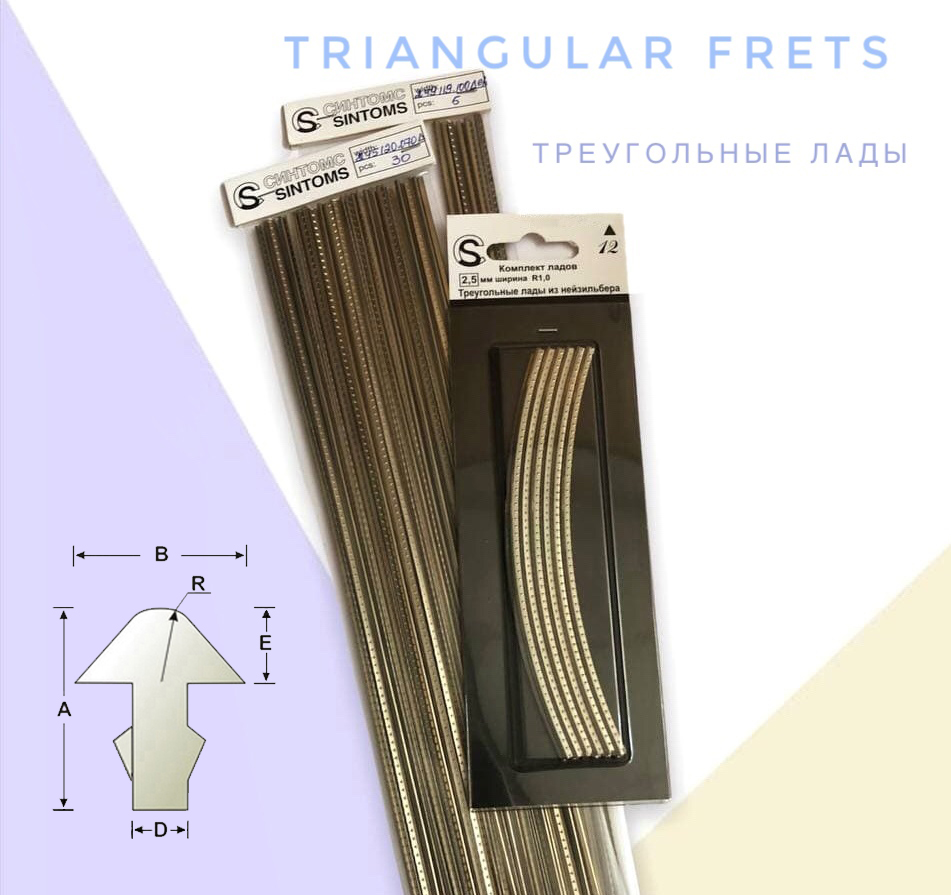
Triangular frets are specially designed for studio recordings. They make the sound of an instrument flat, bright and clear, excluding any rustle due to the minimum contact of strings with frets.
They are usually mounted on electroacoustic and electric guitars as sensitive audio equipment catches even the slightest shades of the sound of an instrument.
They are produced in 2 types:
1. Sharp triangular frets with a smaller fret crown radius;
2. Non-sharp triangular frets with a larger fret crown radius.
The performance of glissando on the instrument with sharp triangular frets is more difficult than on the instrument with non-sharp ones.
Triangular frets are produced from nickel silver.
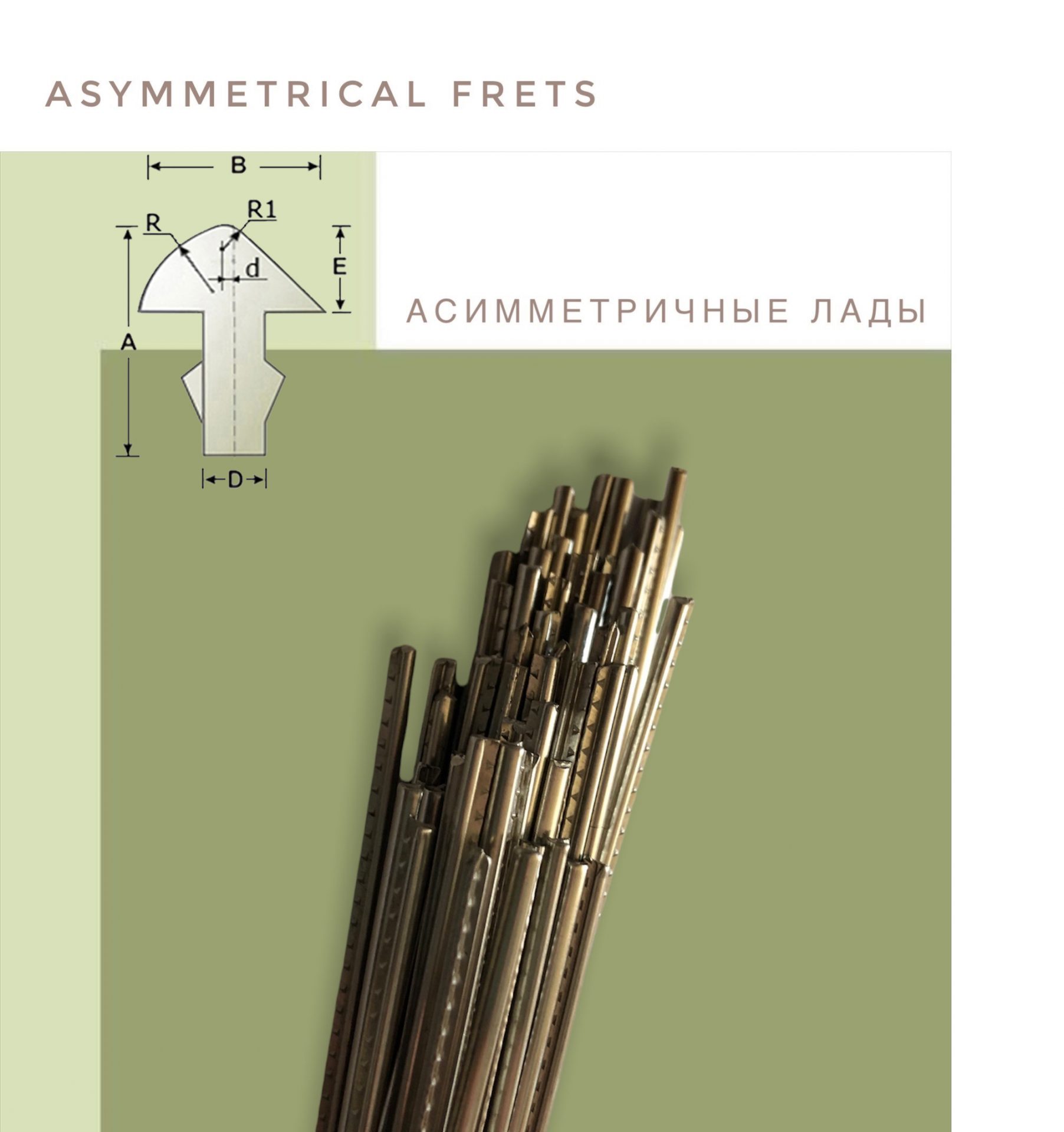
Asymmetrical frets give an opportunity to tune strings on each fret.
Due to the unique shape of the fret crown, one side of which has a radius while the other one has a straight line, asymmetrical frets allow not only to reduce rustling and fret wear but also easily to play a glissando or legato from top to bottom.
They are especially popular among luthiers who make and repair classical guitars.
Asymmetrical frets are produced from 2 materials:
1. Nickel silver;
2. Stainless steel.
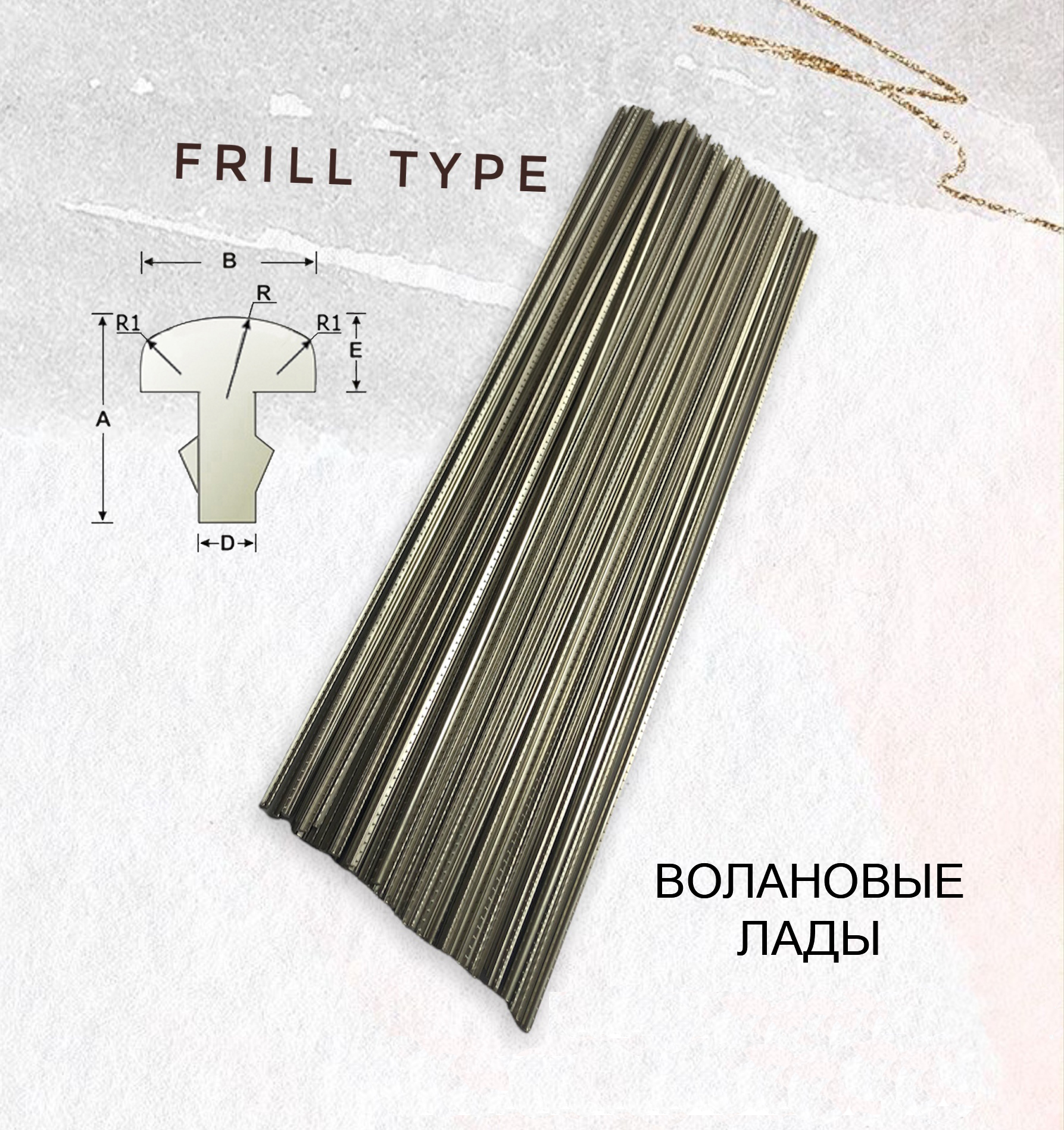
The main difference of frill frets from other types of frets is the optimum combination of the shape and weight of a fret.
The achieved combination:
Frill frets are produced from different materials:
1. Nickel silver with 12%, 18% and 25% nickel content;
2. Stainless steel;
3. Ringing stainless steel;
4. Bell bronze.
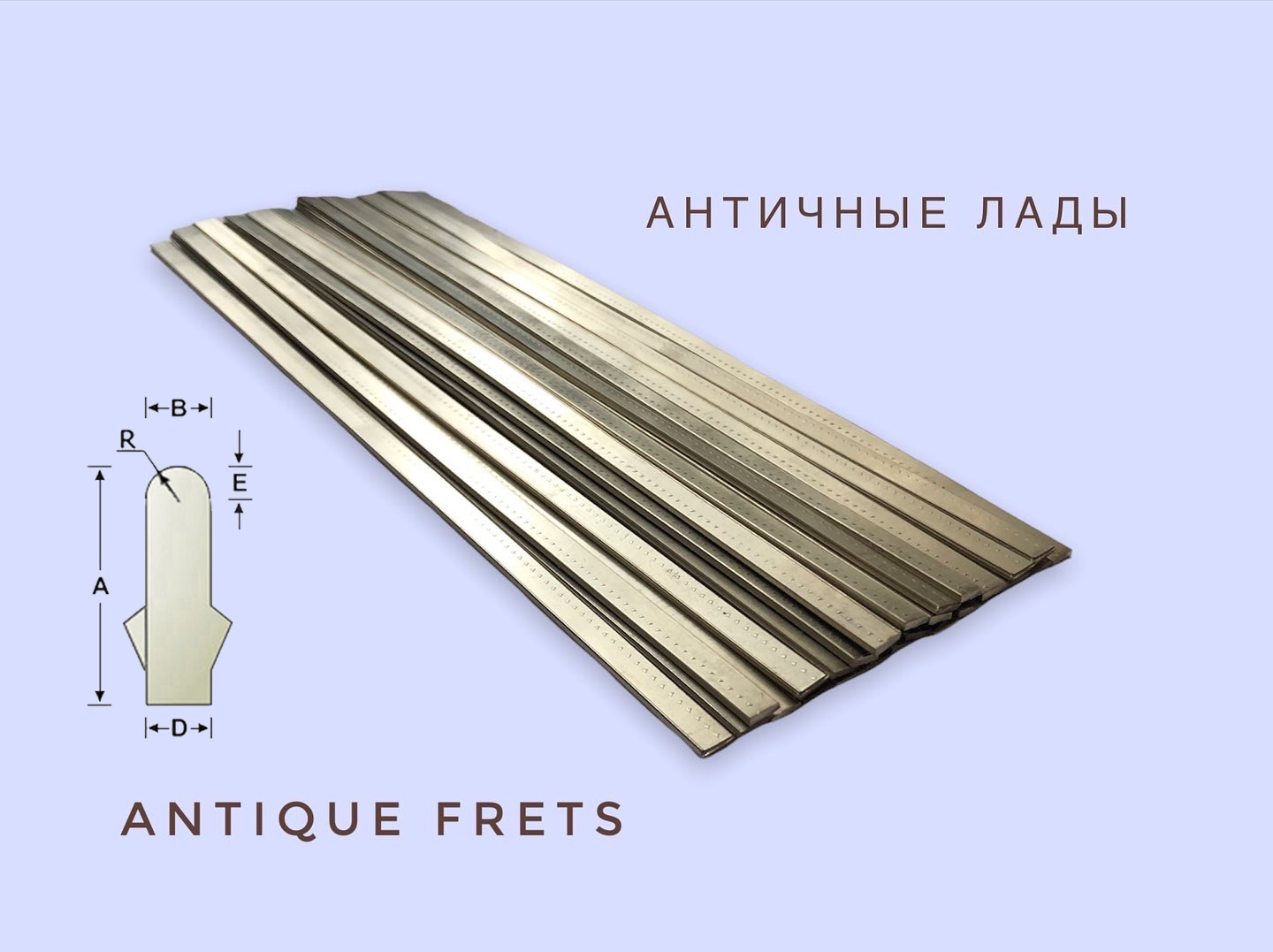
This type of frets are specially designed for restoration of ancient musical instruments as well as for creation of new musical instruments of ancient construction.
Frets of modern construction can influence the sound of an ancient musical instrument and spoil its appearance.
Antique frets are produced from nickel silver with 18% nickel content.
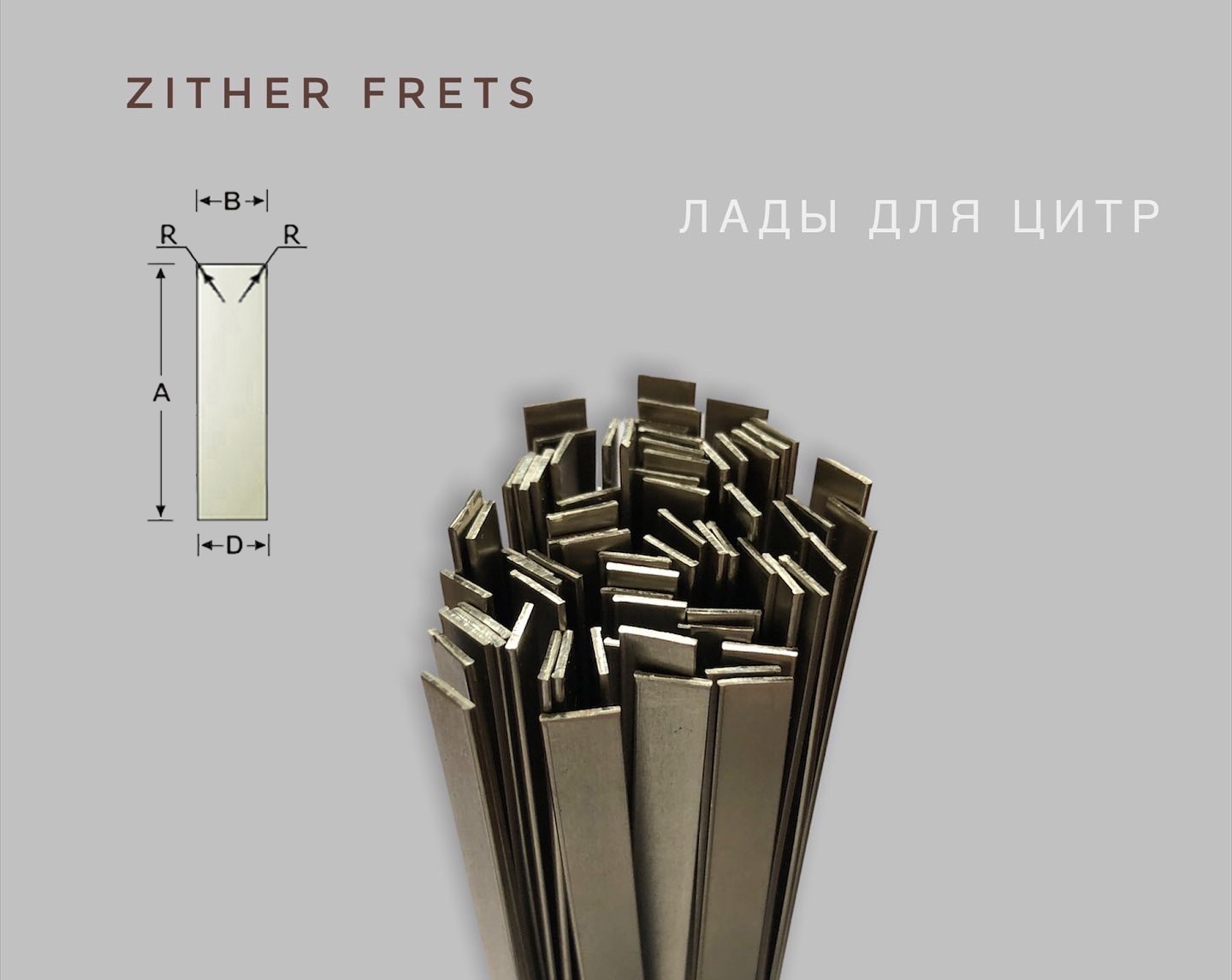
This type of frets are specially designed for zithers.
This type of frets is quite specific as zithers have narrow and pretty high frets. Frets with such a profile can be mounted on different models of zithers.
Zither frets are produced from nickel silver with 18% nickel content.
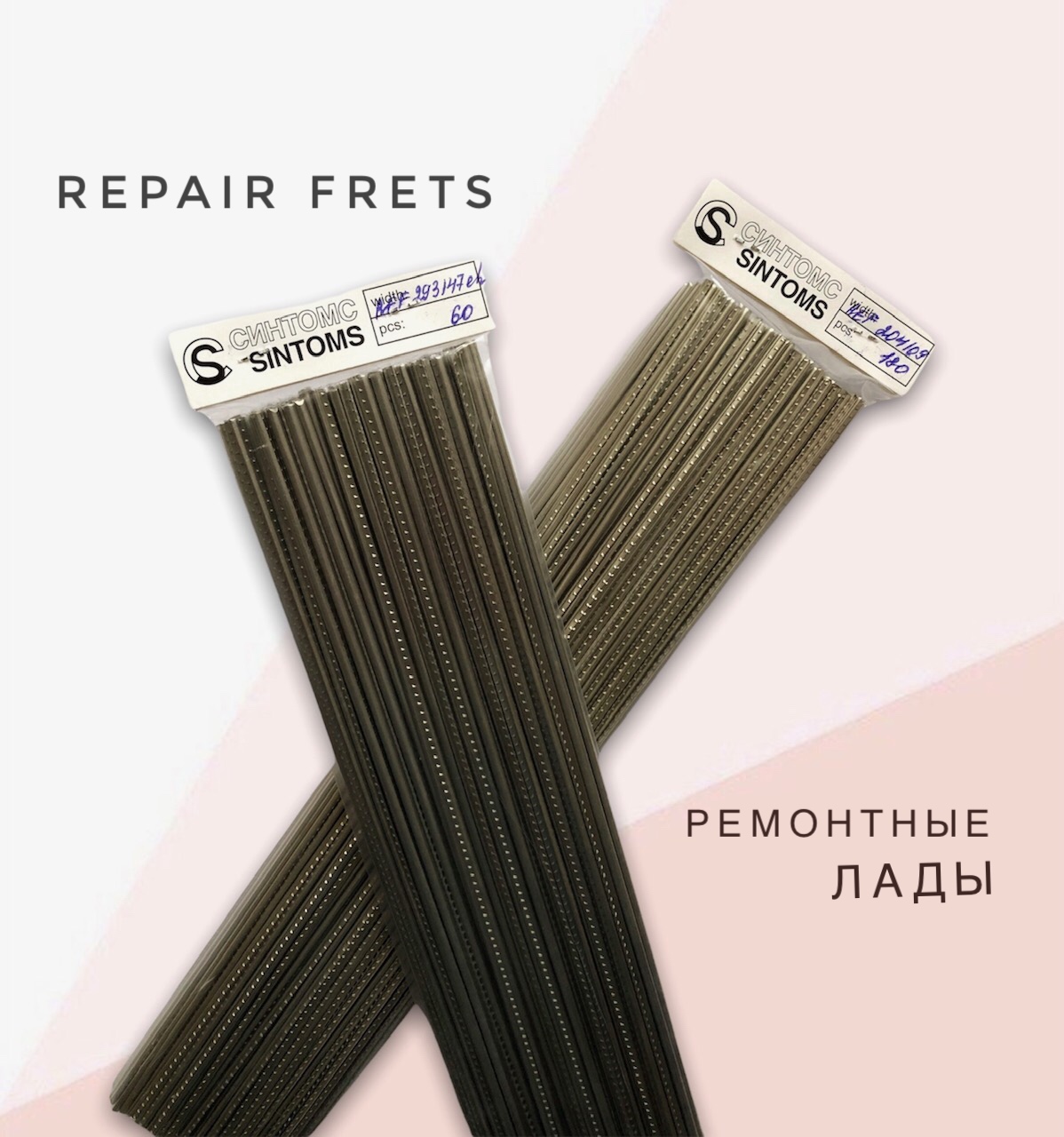
The replacement of old worn-out frets often leads to damaging and widening of slots in the fingerboard. As a rule the tang width of modern frets is up to 0.5 mm. Mounting a fret like this into a damaged wide slot results in a diffused sound of a musical instrument.
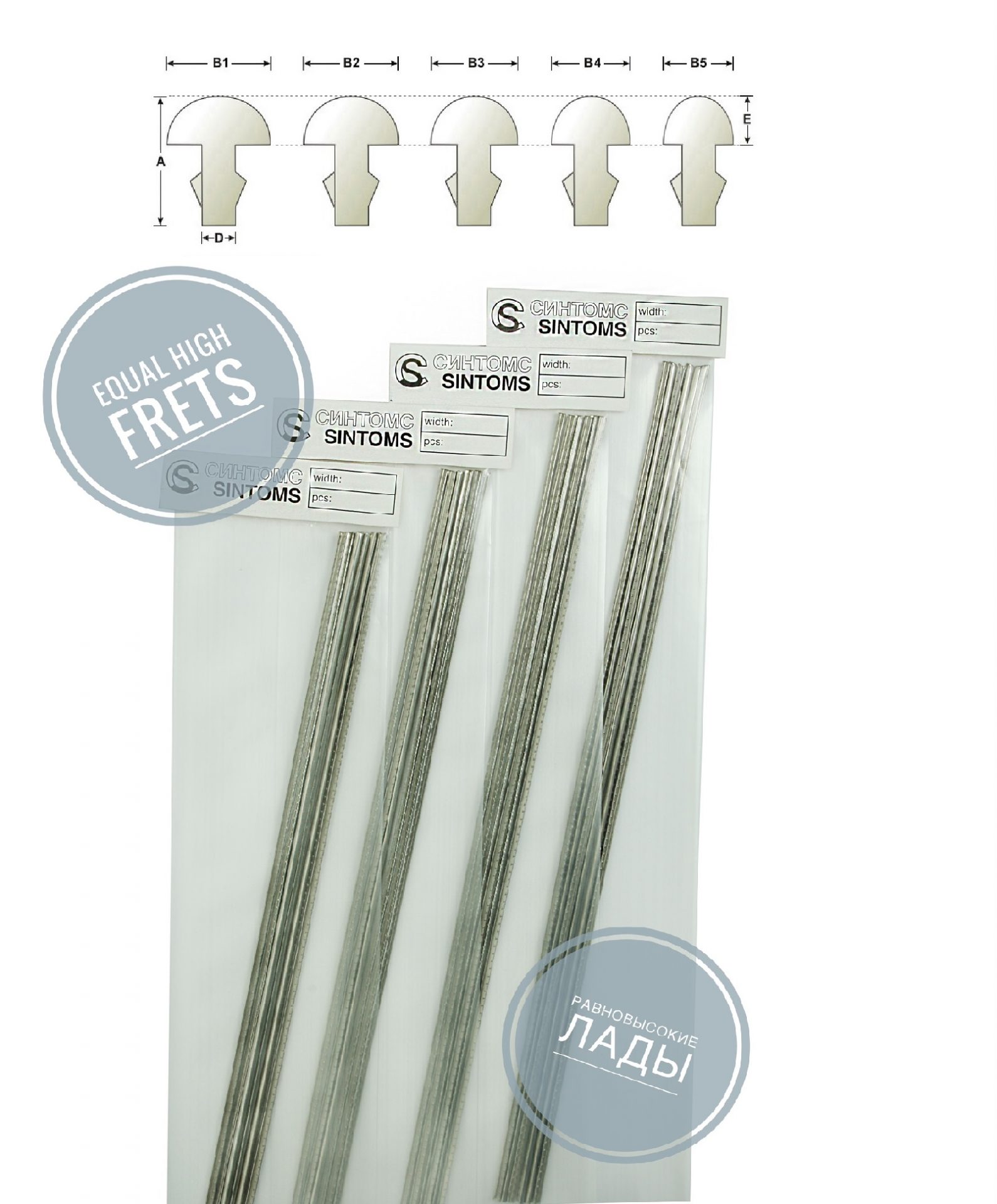
EQH frets are produced with different fret crown width but equal crown height.
The main idea of these frets is to facilitate playing musical instrument with frets, the space between which narrows to the bottom of the fingerboard. EQH frets give an opportunity to increase this space for a musician to play such an instrument easily and comfortably at the bottom of the fingerboard.
There are 2 lines of EQH frets:
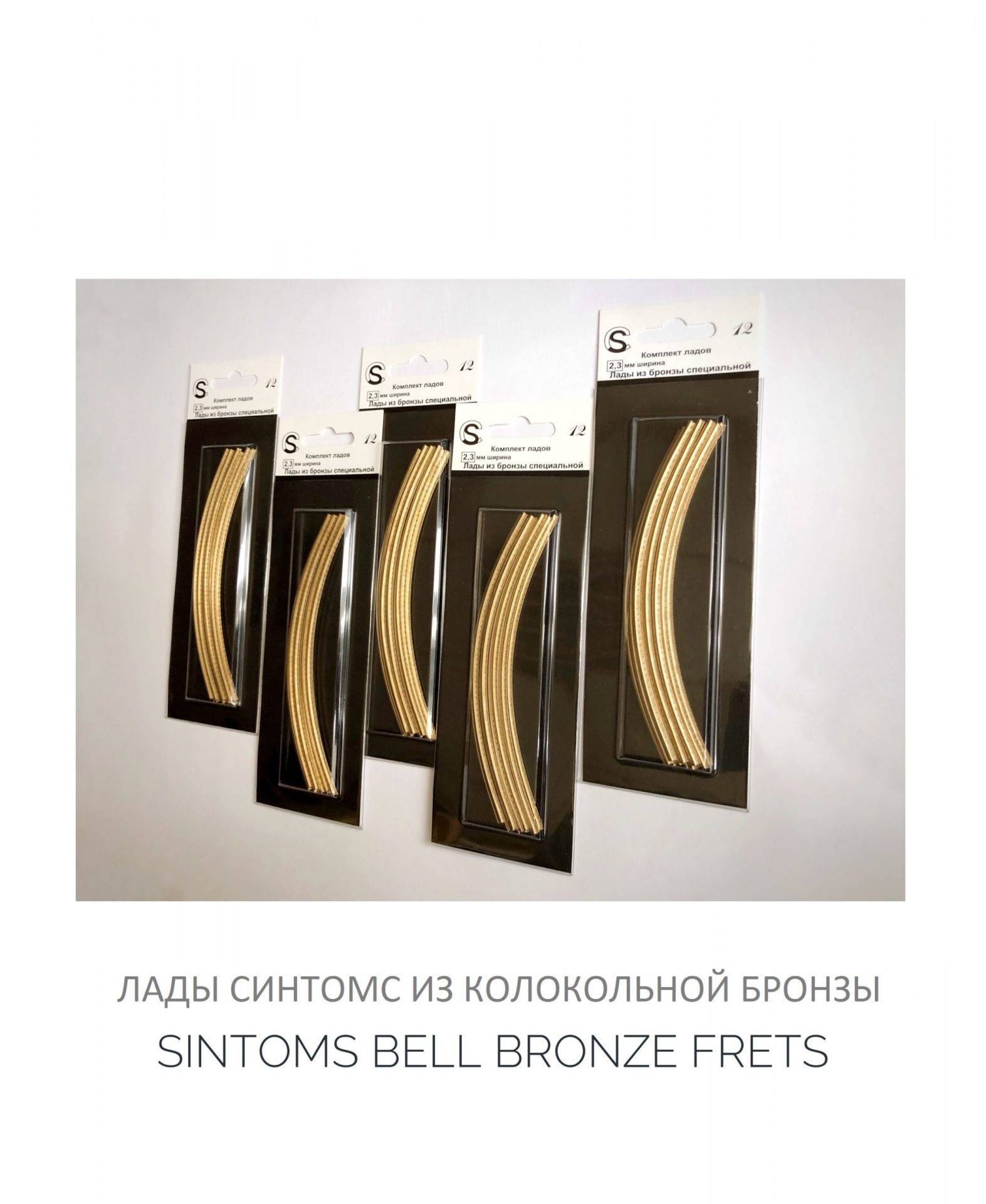
There are 2 crown shapes (types) of bronze frets: conventional and frill.
SINTOMS bell bronze frets are a real masterpiece among other frets due to the following characteristics:
1. Increased wear resistance. Bronze frets may last from 7 to 10 times longer than the standard nickel silver frets.
2. Prolonged sustain. Bronze frets, especially frets with frill profile, provide a clear sound throughout the full sound range of an instrument.
3. Improved articulation. Bronze frets make the sound more articulate, clear and focused. They absorb the sound less at low and medium frequencies.
4. Well-balanced sound. These frets make the sound of an instrument more balanced and natural while playing a melody.
5. Aesthetics. Bell bronze metal has a nice deep golden colour that perfectly matches gold or chrome colored hardware.
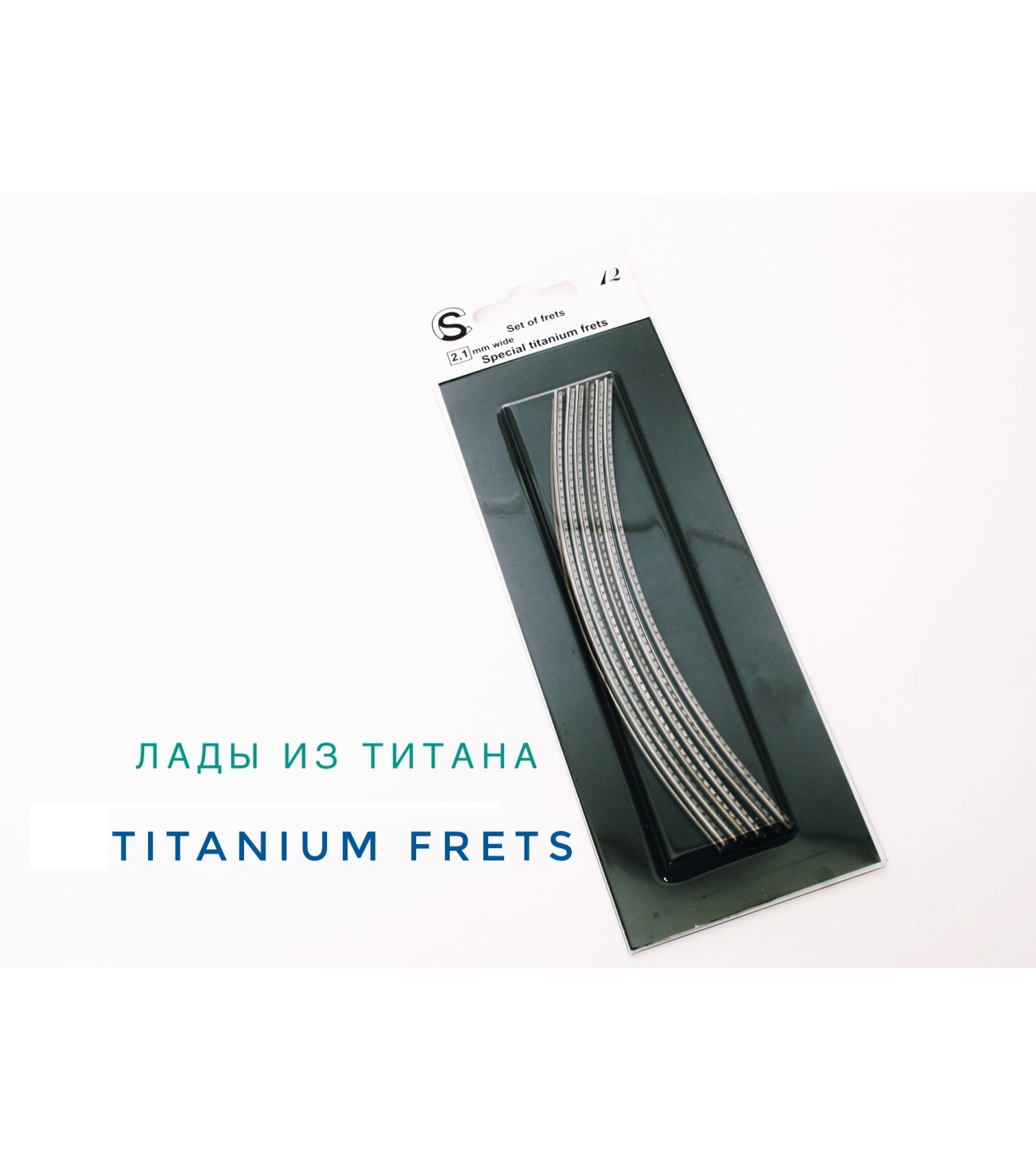
Peculiarities of titanium frets:
1. Preserve and support the sound of a musical instrument well improving its timbre.
2. Have excellent resistance to the corrosion.
3. The lightest among the frets made of other materials.
4. More durable than nickel silver frets.
It is not recommended to install titanium frets on instruments with metal strings or with strings having nickel or steel wound because while playing such an instrument there may appear a side tone or a squeak, some inconvenience due to the feeling of friction of a string against a fret.
Titanium frets are preferably installed on classical guitars or other musical instruments with nylon strings or with strings having soft metal wound.
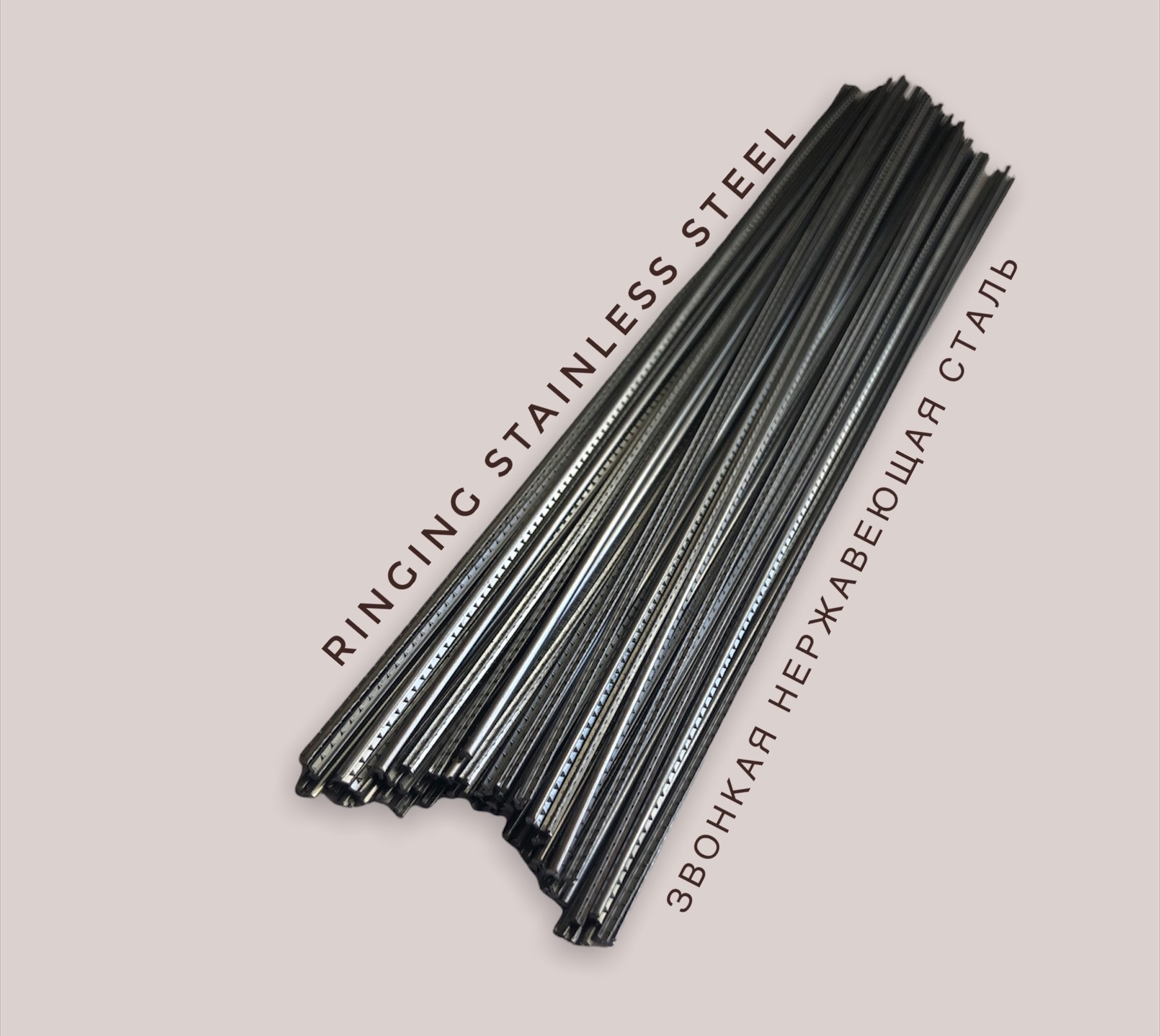
Pecularities of ringing stainless steel frets:
1. Have increased wear resistance.
2. Improve sound quality of a musical instrument providing smoother and more natural sound.
3. Increase sustain of an instrument.
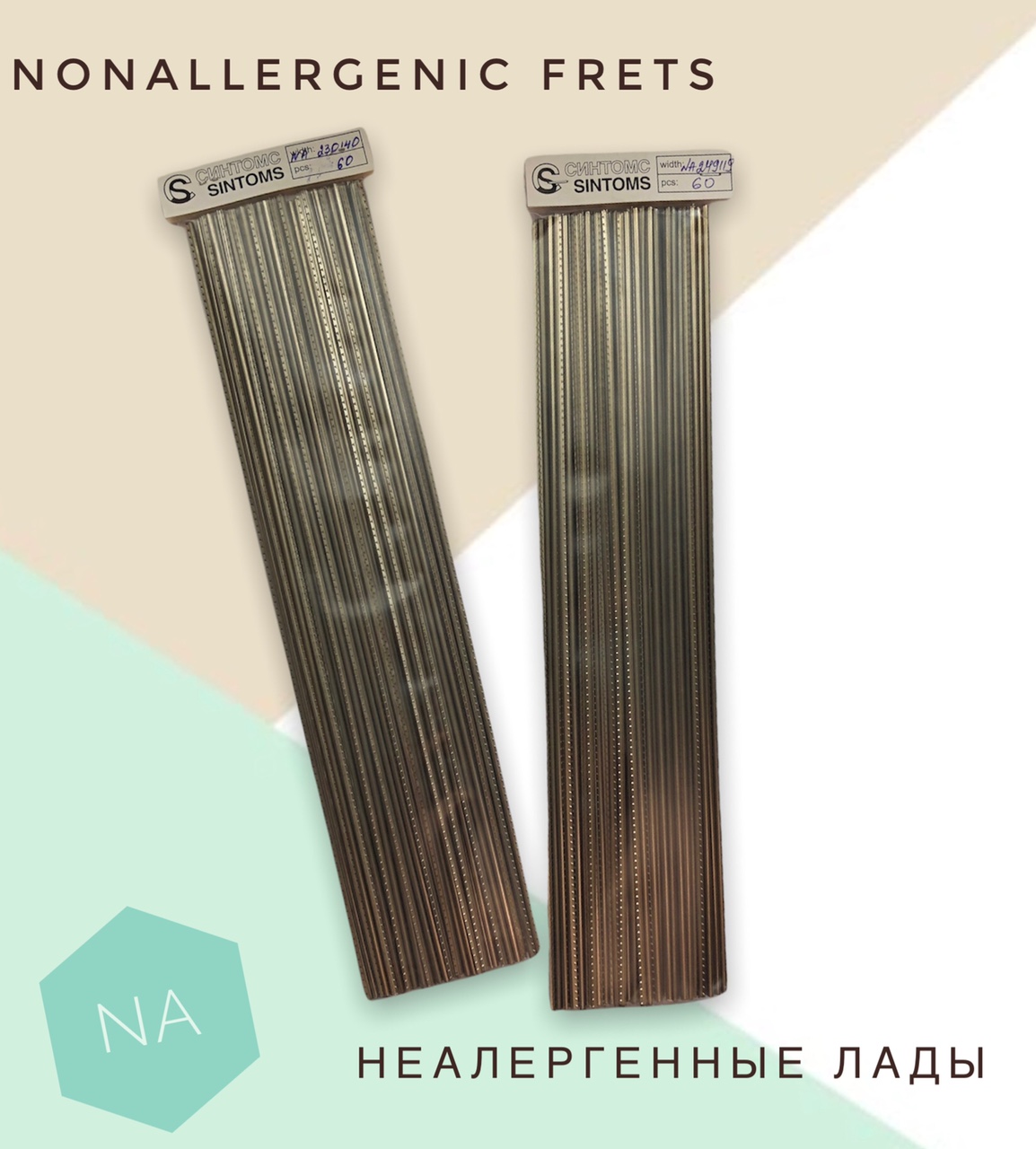
Nonallergenic frets are made of materials that do not cause an allergenic reaction of a musician.
We manufacture these frets as there is an increase in people allergic to nickel.
Nonallergenic frets have silver color, do not contain nickel and do not cause an allergenic reaction.